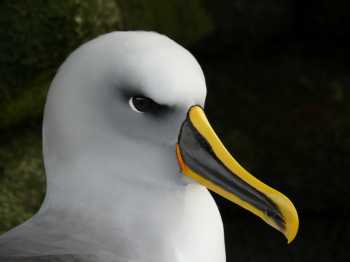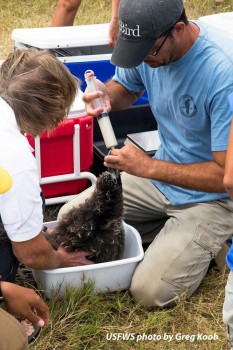André Raine (Kaua‘i Endangered Seabird Recovery Project, Hanapēpē, Kaua‘i, Hawaii, USA) and colleagues have published in the journal The Condor: Ornithological Applications on population changes in globally Vulnerable Hawaiian Petrels Pterodroma sandwichensis and globally Endangered Newell's Shearwaters Puffinus newelli on the Hawaiian island of Kauai.
The paper’s abstract follows:
“The island of Kaua‘i, Hawaii, USA, holds a large breeding populations of the endangered Hawaiian Petrel (Pterodroma sandwichensis) and a majority of the world population of the threatened Newell's Shearwater (Puffinus newelli). We evaluated island-wide population trends of both species. For Newell's Shearwaters, we considered radar counts at 13 sites between 1993 and 2013 and annual island-wide tallies of fledglings retrieved after being grounded by light attraction in 1979–2015 (Save Our Shearwaters [SOS] program). For Hawaiian Petrels, we considered radar counts alone. Radar data indicated a 78% decline overall in numbers of Hawaiian Petrels (at an average rate of ∼6% per year) and a 94% decline overall in numbers of Newell's Shearwaters (at an average rate of ∼13% per year) during the survey period. Most (92%) radar sites showed significant declines of Newell's Shearwaters across the entire survey period, as did 62% of sites for Hawaiian Petrels. The SOS recovery effort collected 30,522 Newell's Shearwater fledglings between 1979 and 2015. When we compared this dataset in pre- and post-Hurricane Iniki (September 1992) periods, we found a significant downward trend after Hurricane Iniki, similar to the trend seen in the radar data. The large-scale declines found in this study are not surprising, considering the significant threats facing both species on Kaua‘i, which include powerline collisions, light attraction, introduced predators, and habitat modification—threats which were potentially exacerbated after Hurricane Iniki. Improved conservation initiatives and an increased understanding of the various threats facing the 2 species are key to reversing these declines.”

Newell's Shearwater chick, photograph by André Raine
Reference:
Raine, A.F., Holmes, N.D., Travers, M., Cooper, B.A. & Day, R.H. 2017. Declining population trends of Hawaiian Petrel and Newell's Shearwater on the island of Kaua‘i, Hawaii, USA. The Condor: Ornithological Applications doi.org/10.1650/CONDOR-16-223.1.
http://www.bioone.org/doi/abs/10.1650/CONDOR-16-223.1
John Cooper, ACAP Information Officer, 17 August 2017

 English
English  Français
Français  Español
Español 


